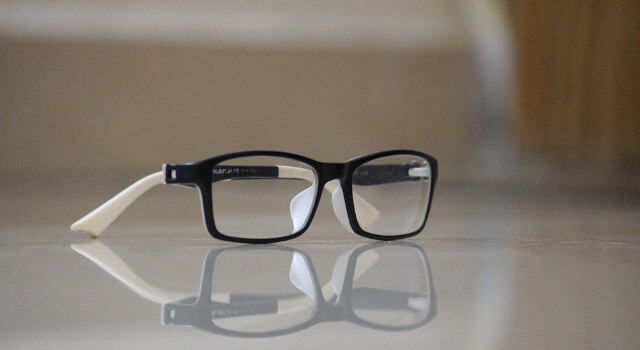Buying glasses is no easy task because there are so many elements to consider. Not everyone has the time to research eyeglass lens materials, designs and coatings.
To make it easier, we’ve compiled a list of different lenses and coatings that offer the best features for your needs.
Types of Lenses and Coatings
Glass lenses
All eyeglass lenses used to be made from glass. Although they offer excellent optics, they’re heavy and can easily crack and break, which can cause harm to the eye. This is why it is very rare to come across such lenses nowadays.
Plastic lenses
Lenses for eyeglasses moved from glass to plastic in the early 1980s as lightweight plastic eyeglass lenses (CR-39) weigh half of what glass lenses weighs, cost less, and possess exceptional optics.
Polycarbonate lenses
Originally these types of lenses were used for safety glasses. Later on, they were used for regular glasses. Polycarbonate is lighter and significantly more impact-resistant than CR-39 plastic, making it a preferred material for children's eyewear, safety glasses and sports eyewear.
Trivex lenses
Trivex is a urethane-based pre-polymer. It is a newer lightweight eyeglass lens material that is a stronger, more resistant, clearer alternative to standard polycarbonate.
High-index plastic lenses
In response to the demand for thinner, lighter eyeglasses, a number of lens manufacturers have introduced high-index plastic lenses. These lenses are thinner and lighter than other plastic lenses (CR-39) because they have a higher index of refraction and may also have a lower specific gravity.
Anti-scratch coating
Most of today's modern anti-scratch coatings (also called permagard or hard coats) can make your eyeglass lenses nearly as scratch-resistant as glass.
Anti-reflective coating
Anti-reflective (AR) coating eliminates reflections in lenses that reduce contrast and clarity, especially at night. AR-coated lenses are also much less likely to have glare spots in photographs.
UV-blocking treatment
Cumulative exposure to the sun's harmful ultraviolet (UV) radiation over a person's lifetime has been associated with age-related eye problems including cataracts and macular degeneration.
Thankfully, polycarbonate and nearly all high-index plastic lenses have 100 percent UV protection built-in, due to the absorptive characteristics of the lens material.
But if you choose CR-39 plastic lenses, be aware that these lenses need an added coating applied to provide equal UV protection afforded by other lens materials.
Photochromic treatment
This lens treatment enables eyeglass lenses to darken automatically in response to the sun's UV and high-energy visible (HEV) light rays, and then quickly return to clear (or nearly clear) when indoors. Photochromic lenses are available in virtually all lens materials and designs.
At EYEcenter Optometric, we put your family's needs first. Talk to us about how we can help you maintain healthy vision. Call us today: 916-727-6518 or book an appointment online to see one of our Citrus Heights eye doctors.
Want to Learn More? Read on!
FOLLOW US:

